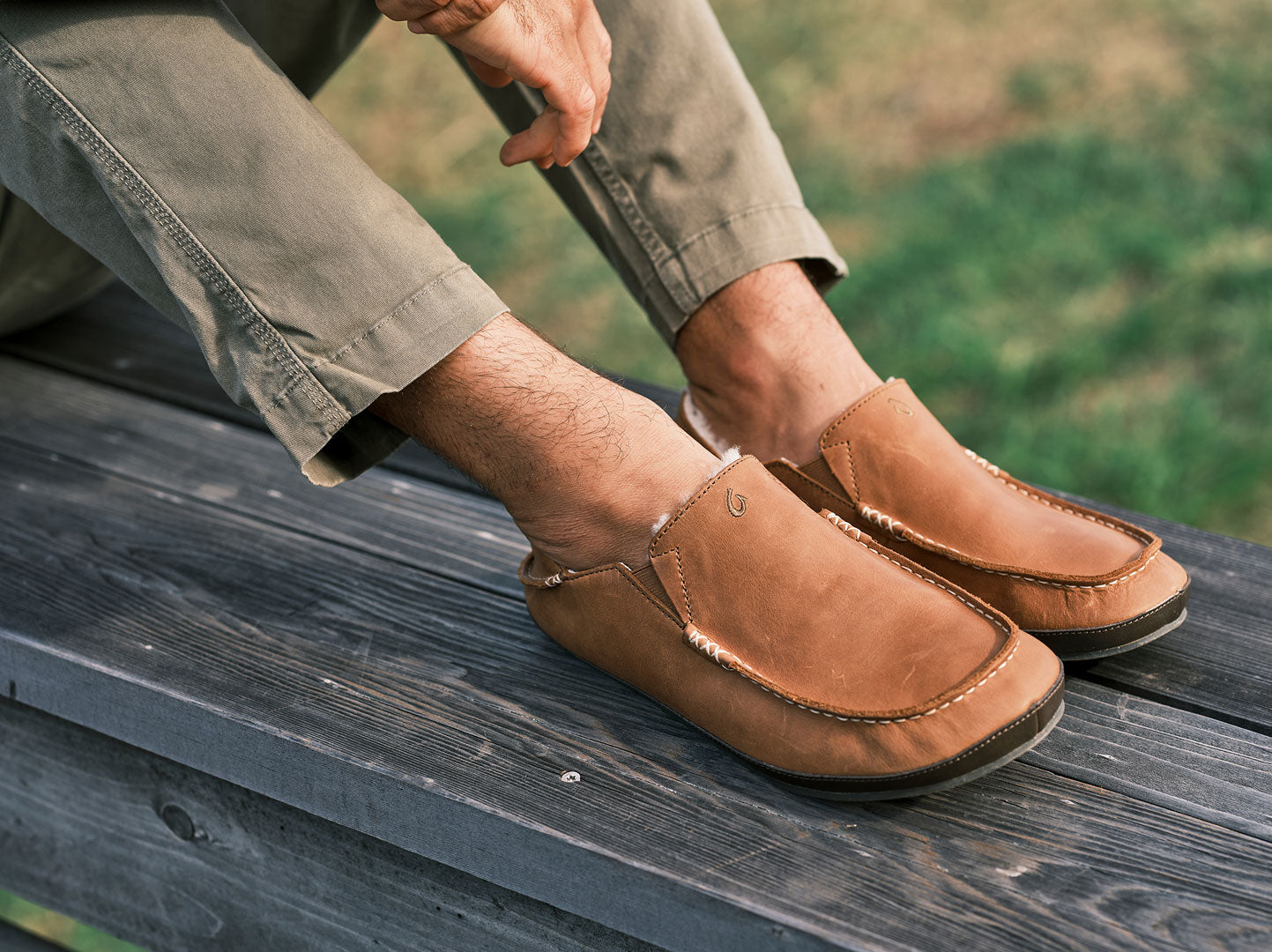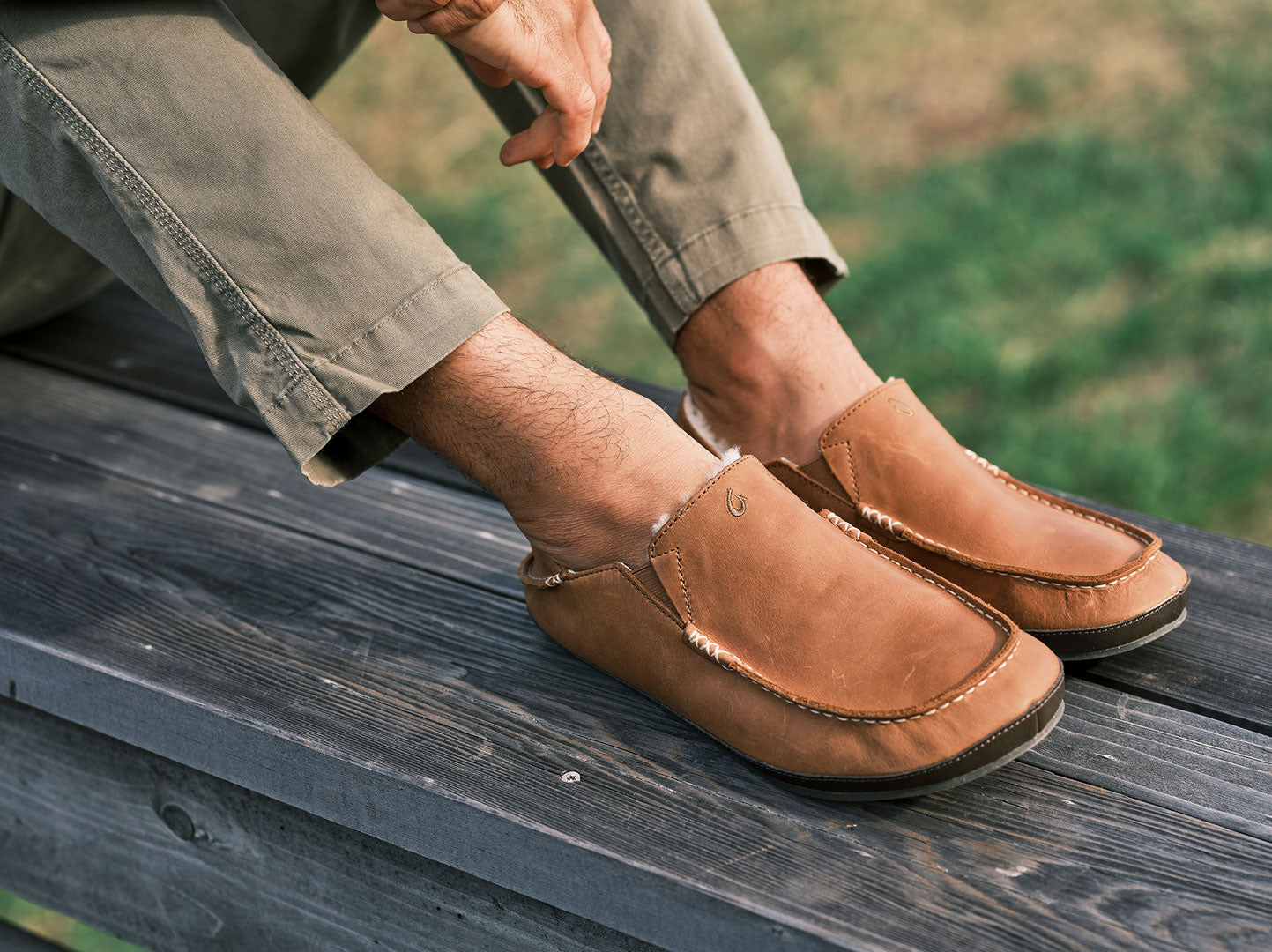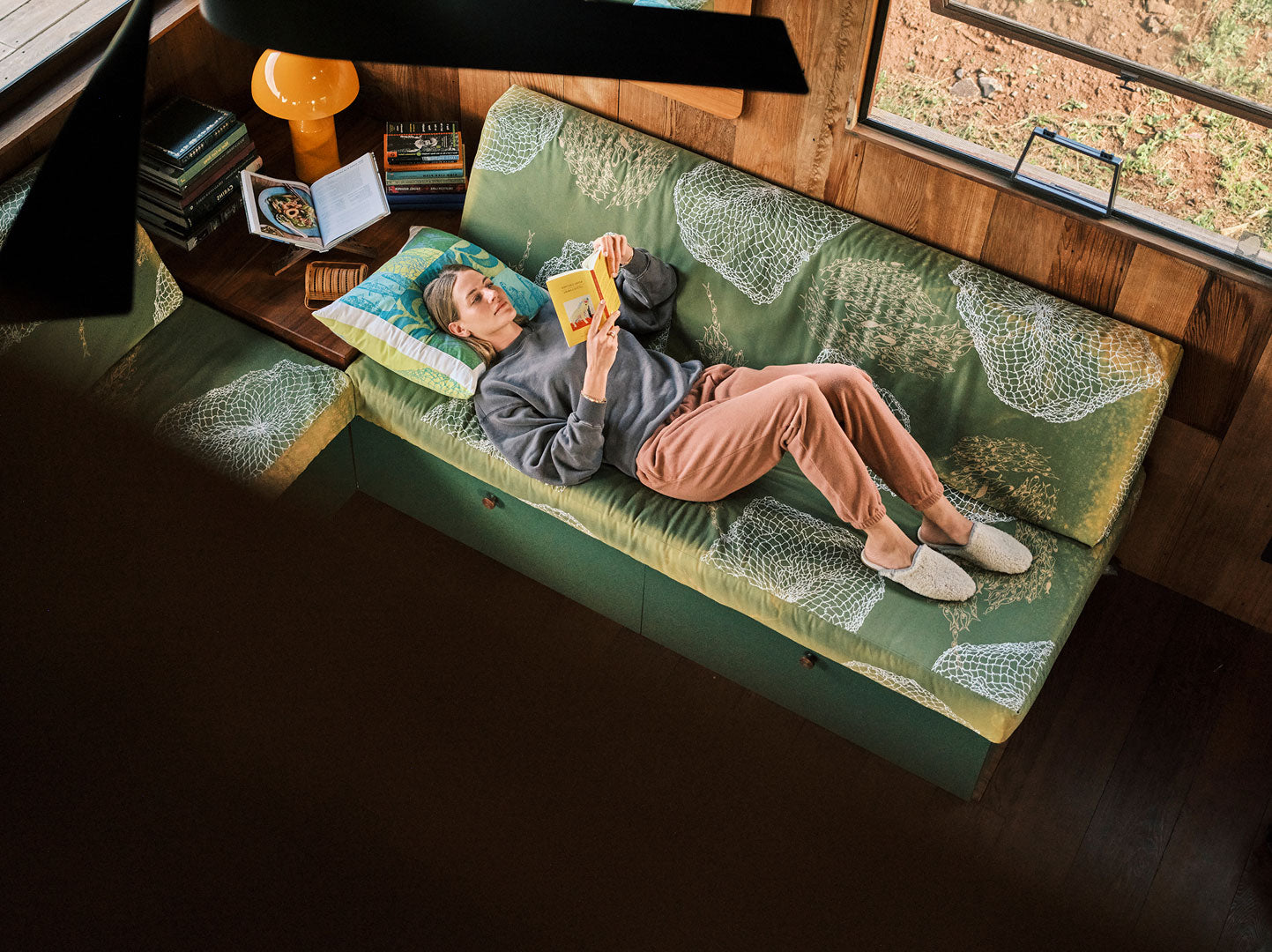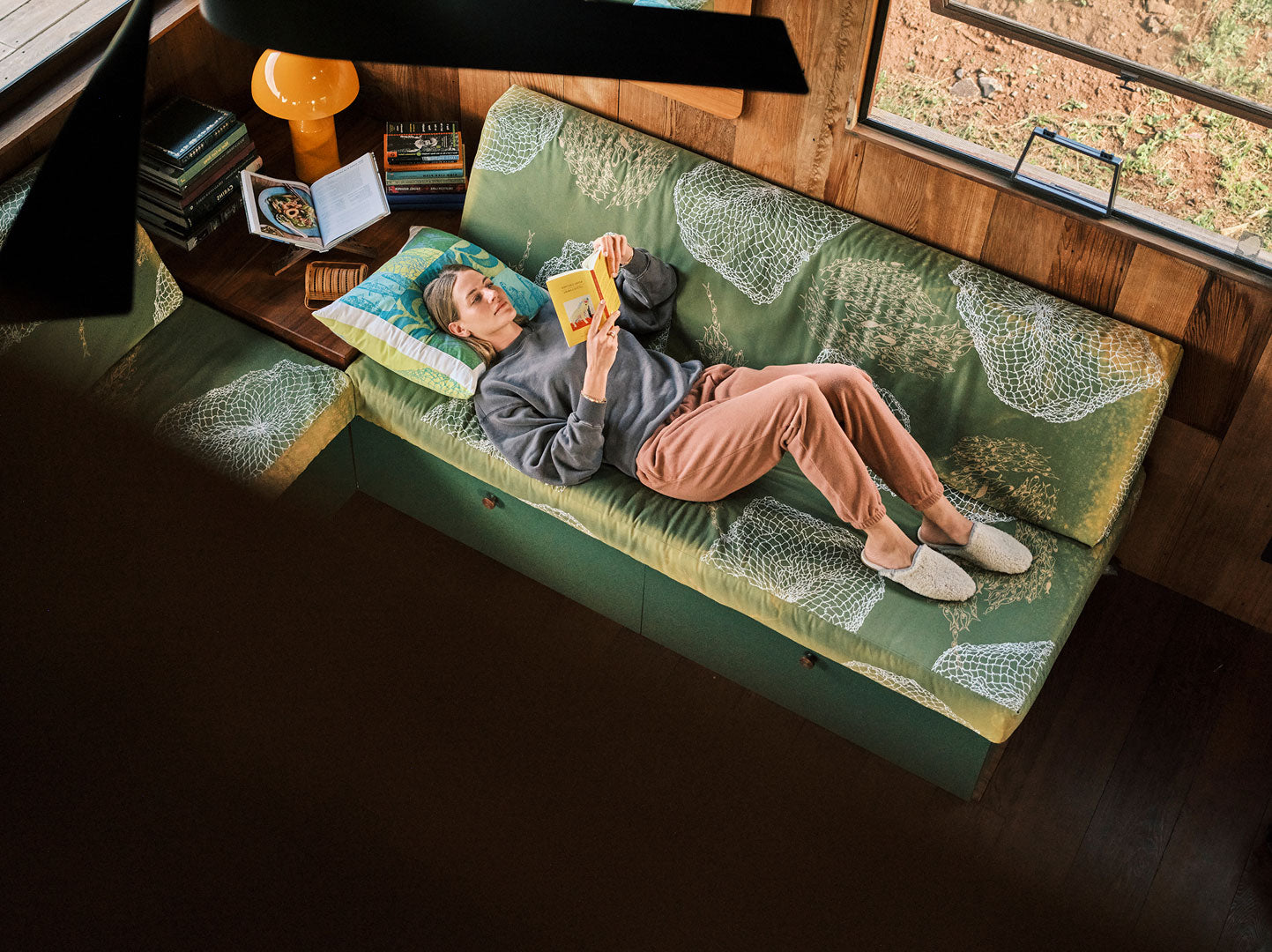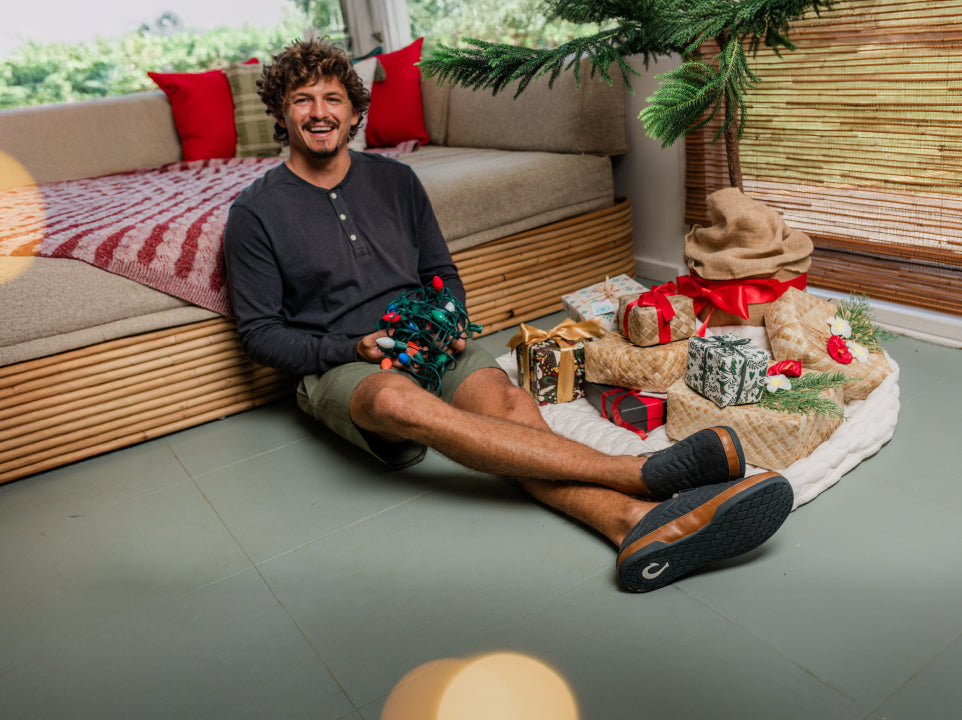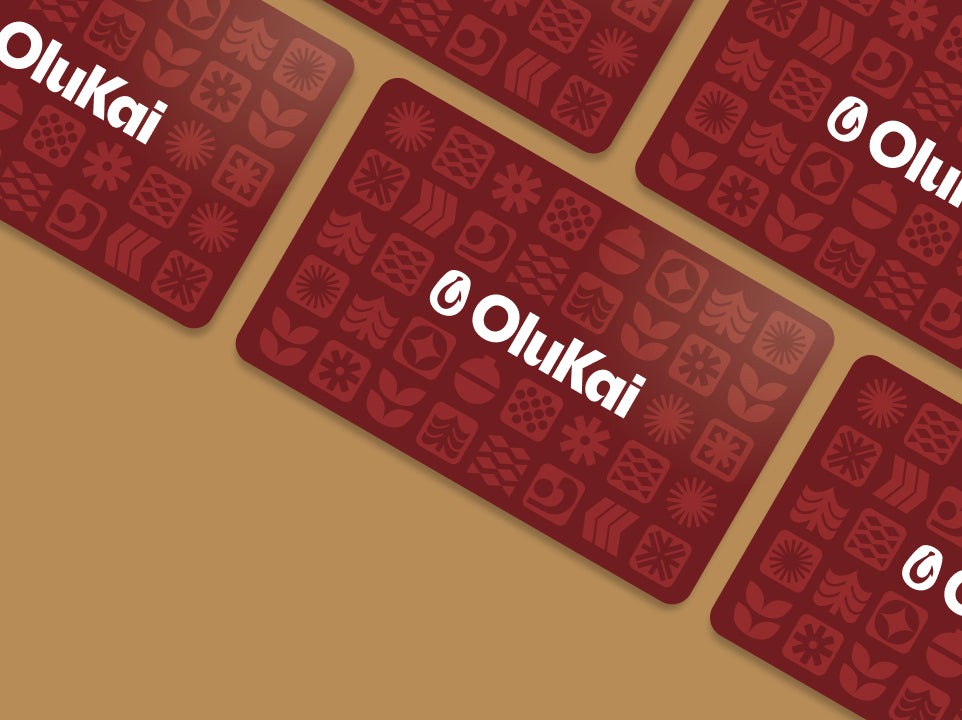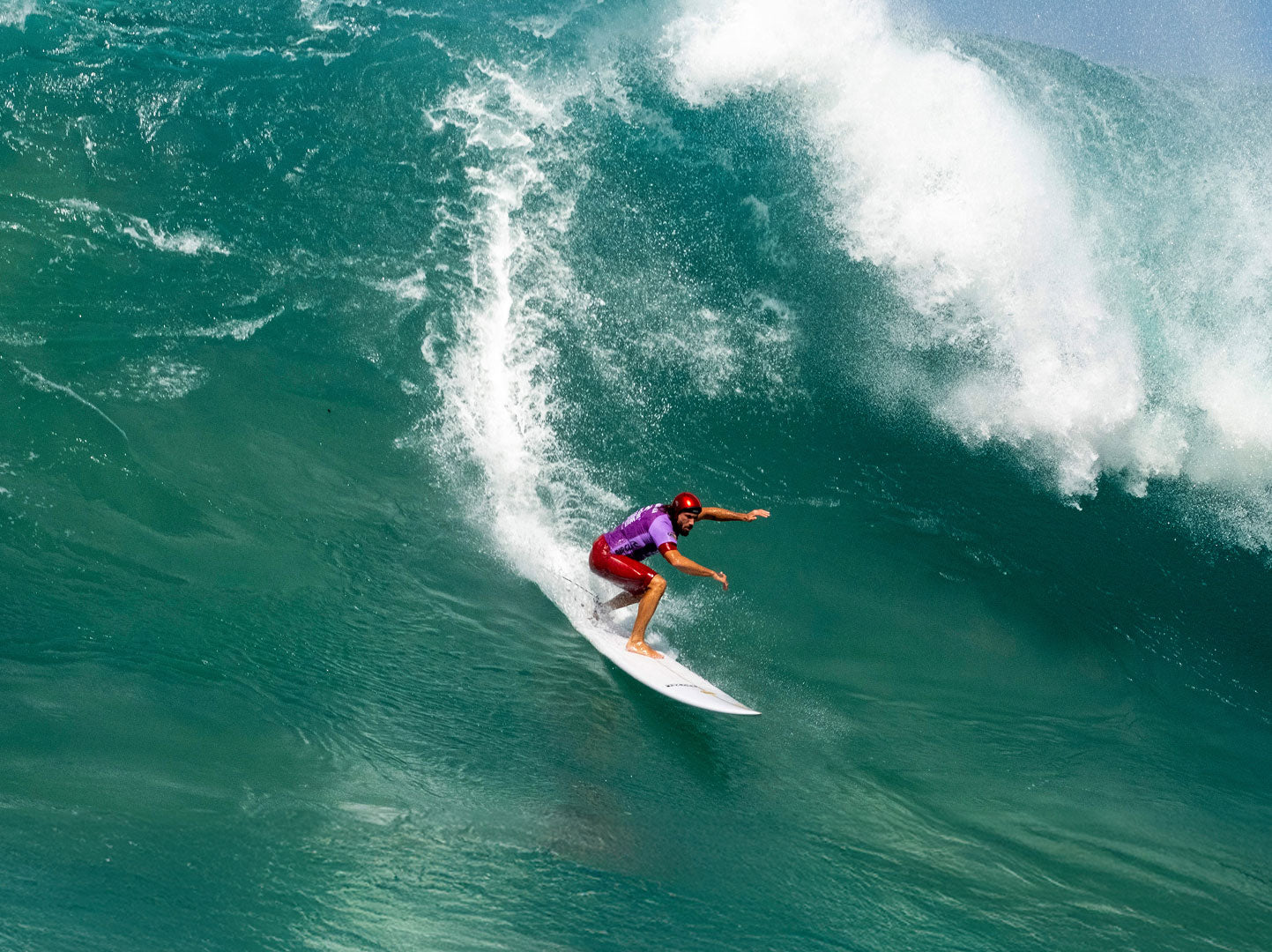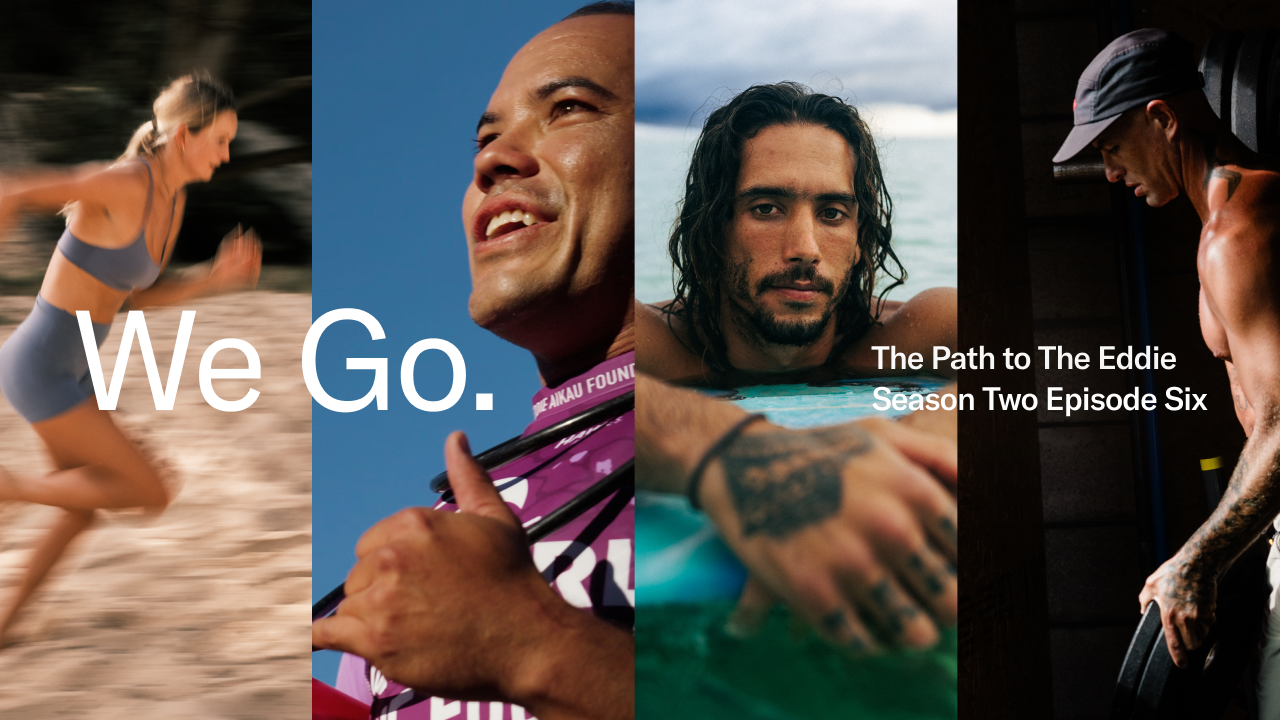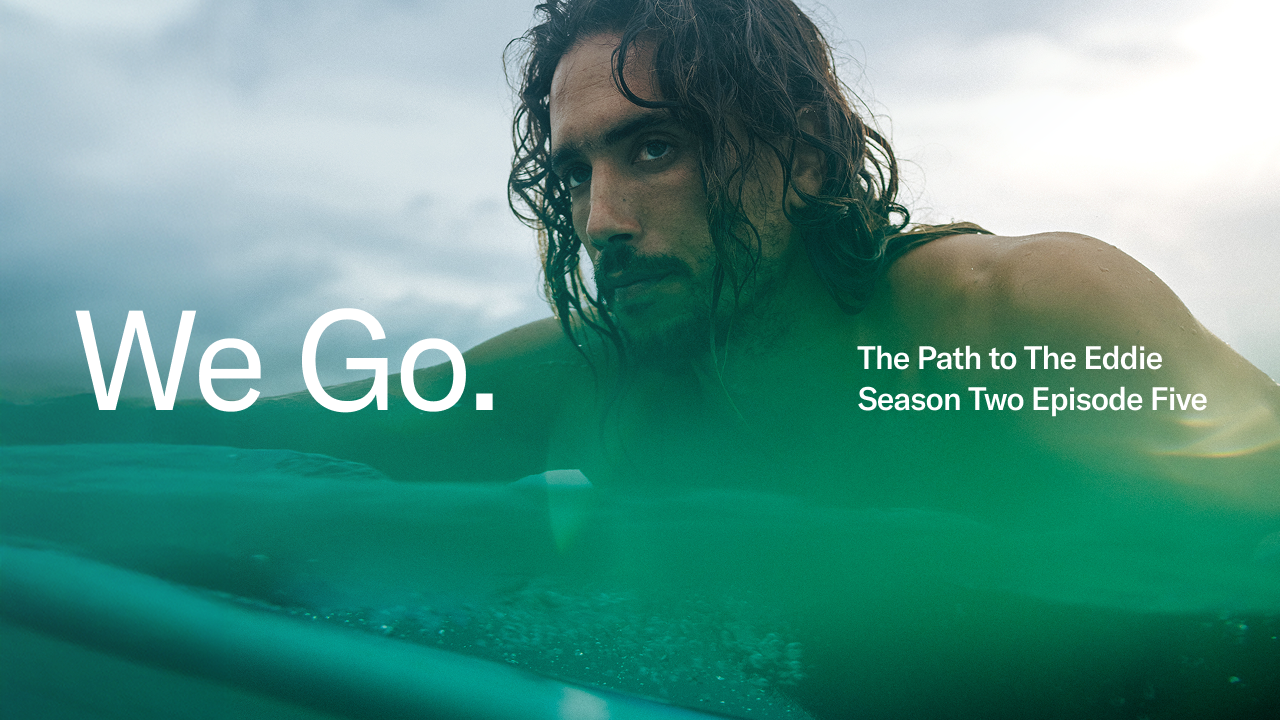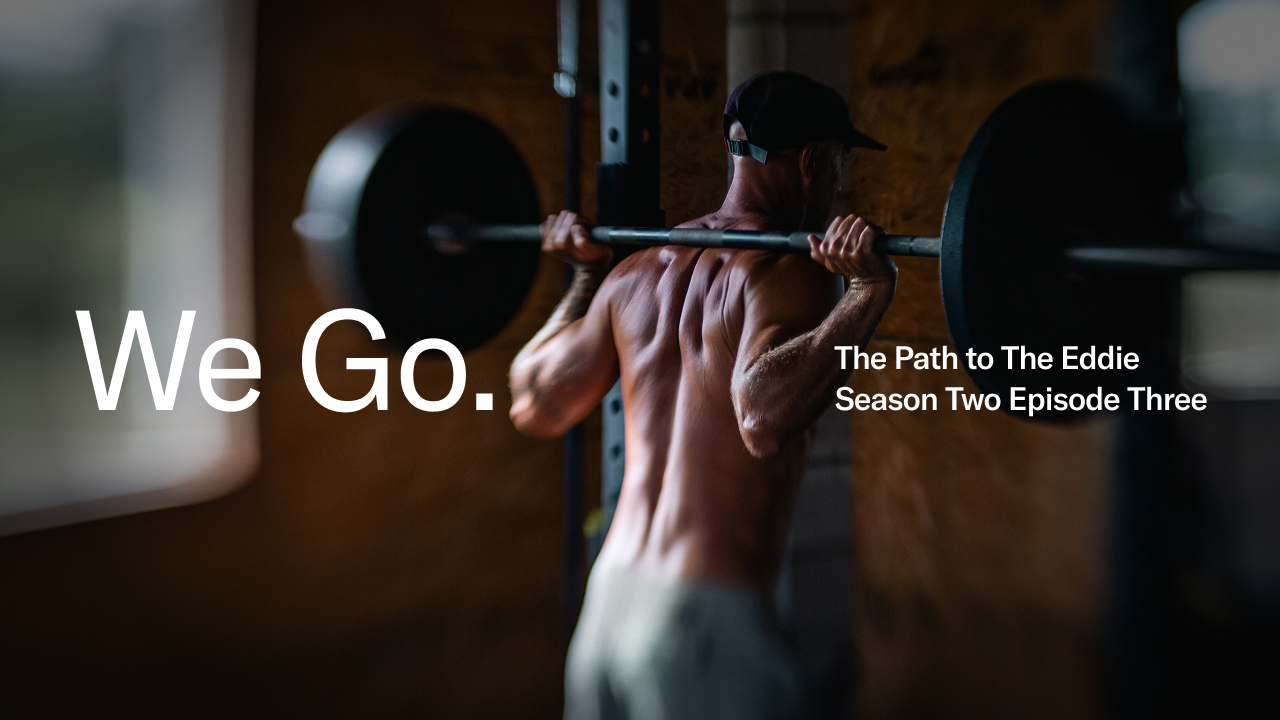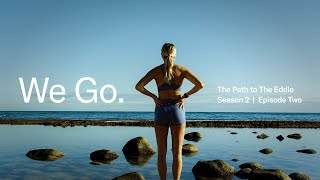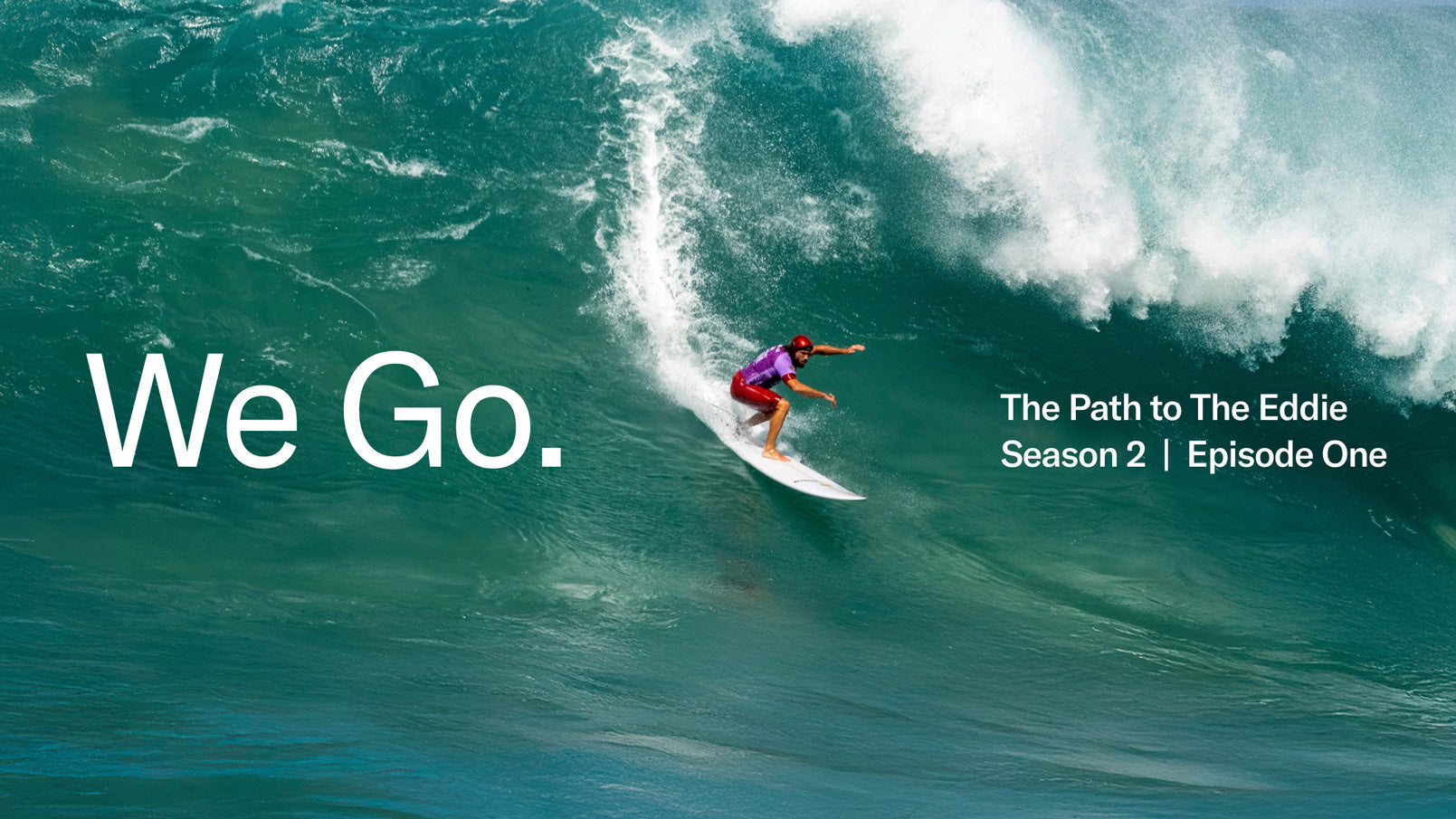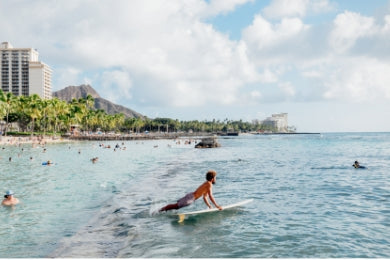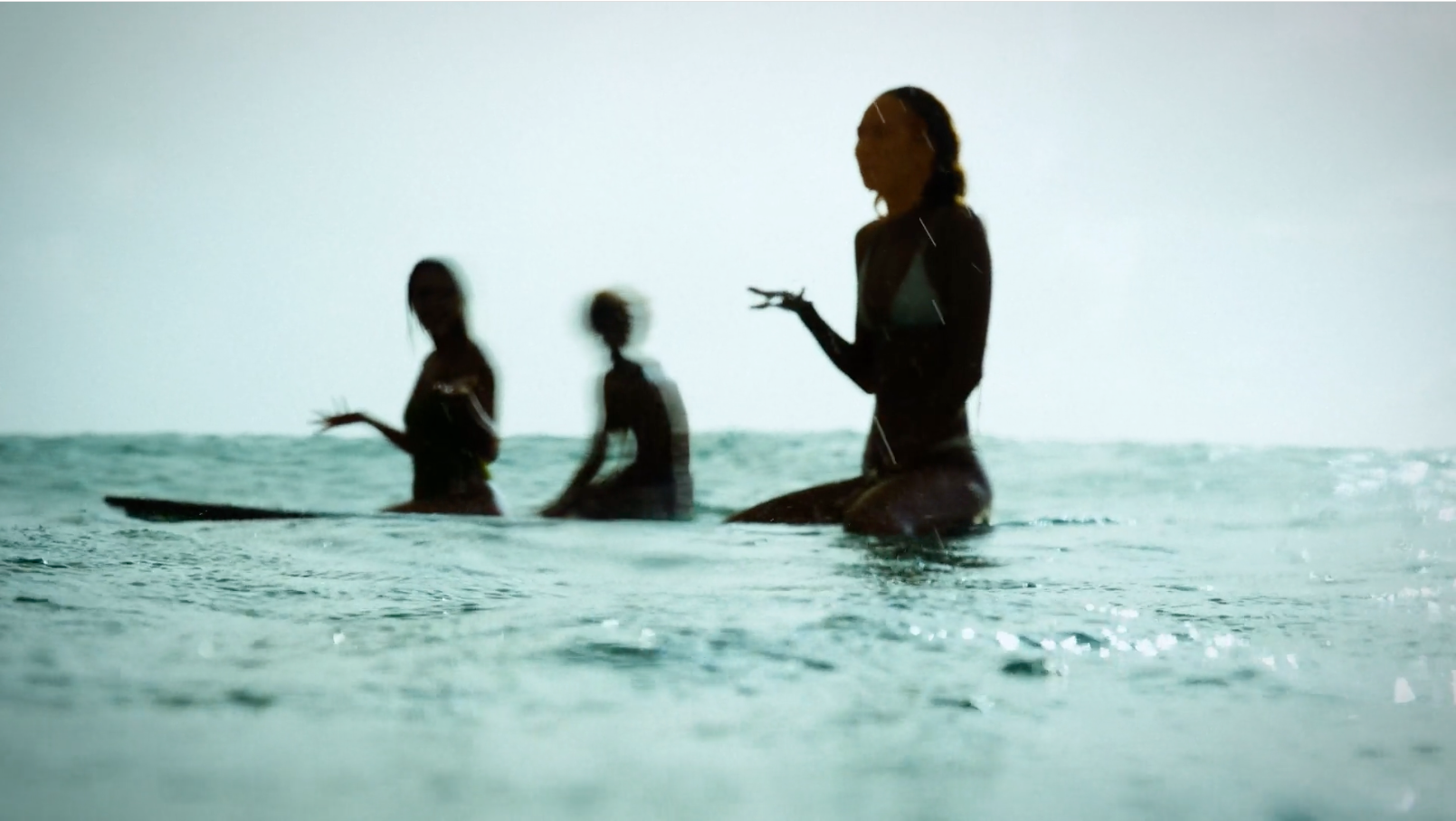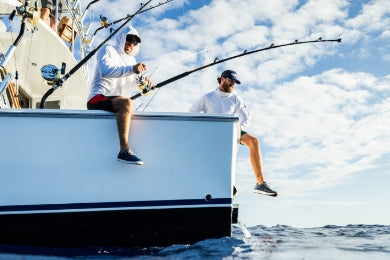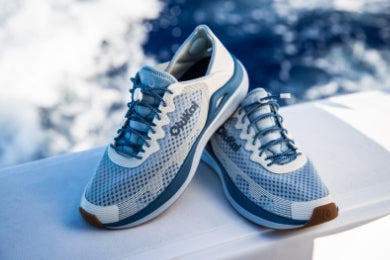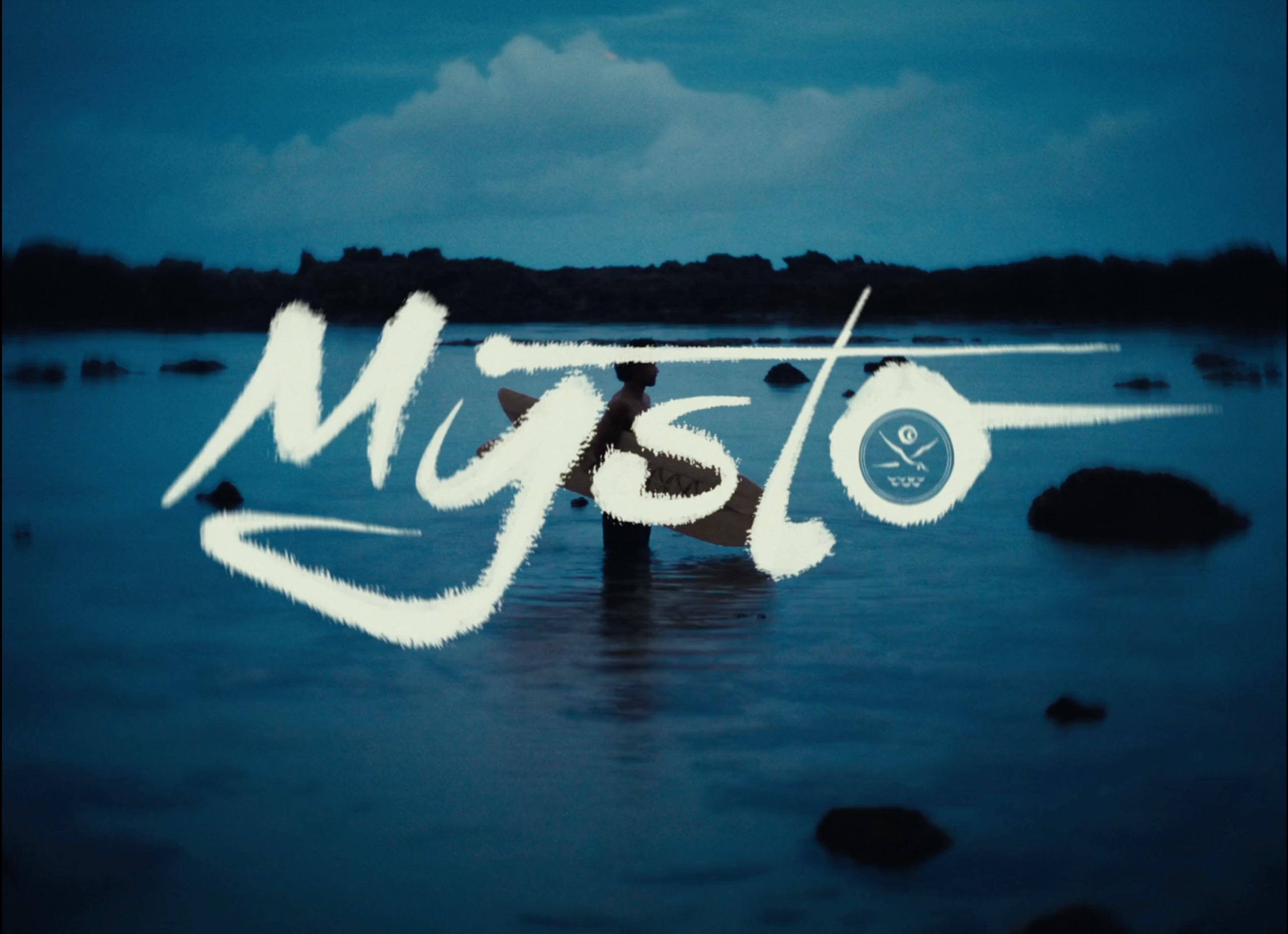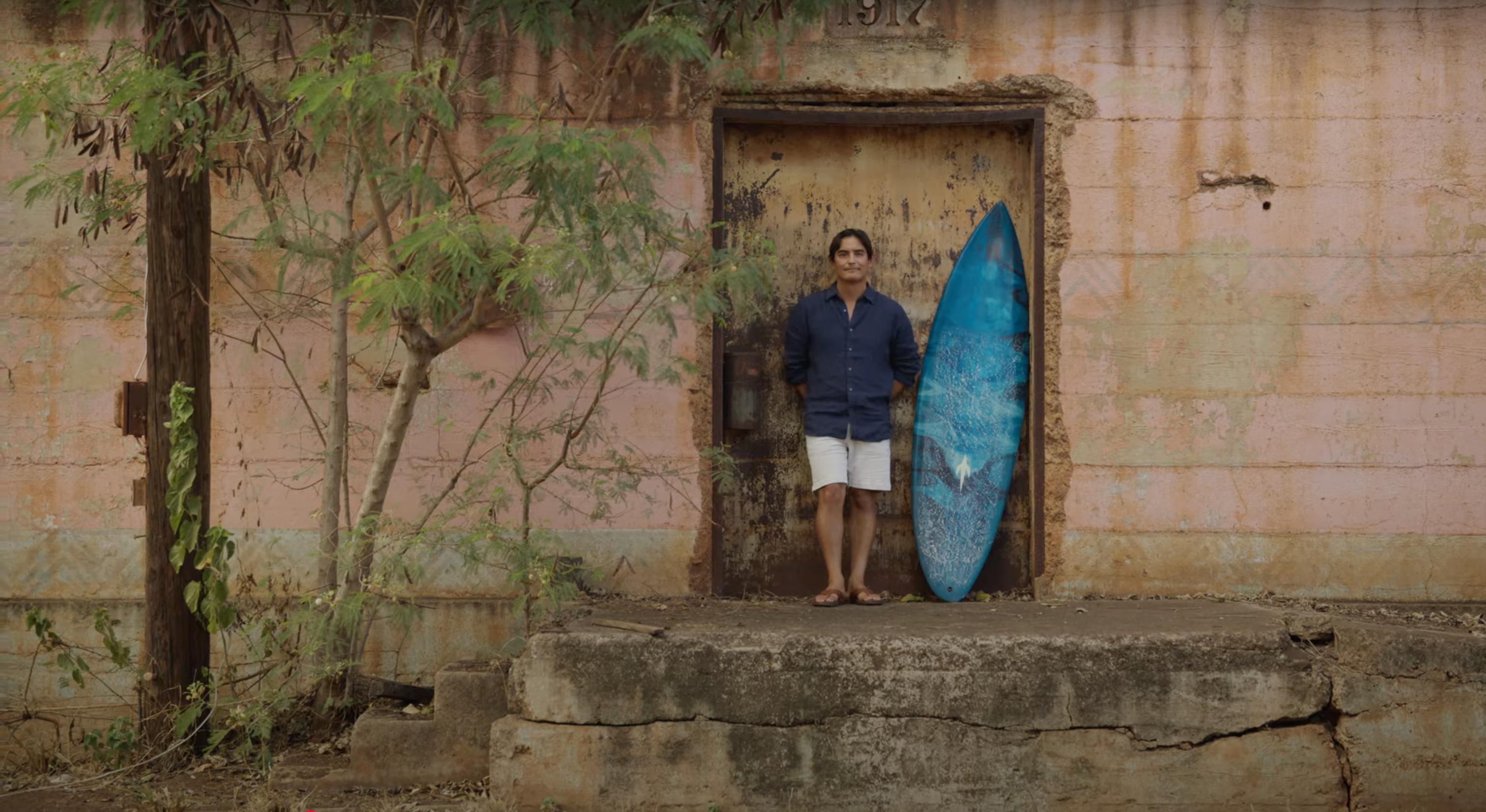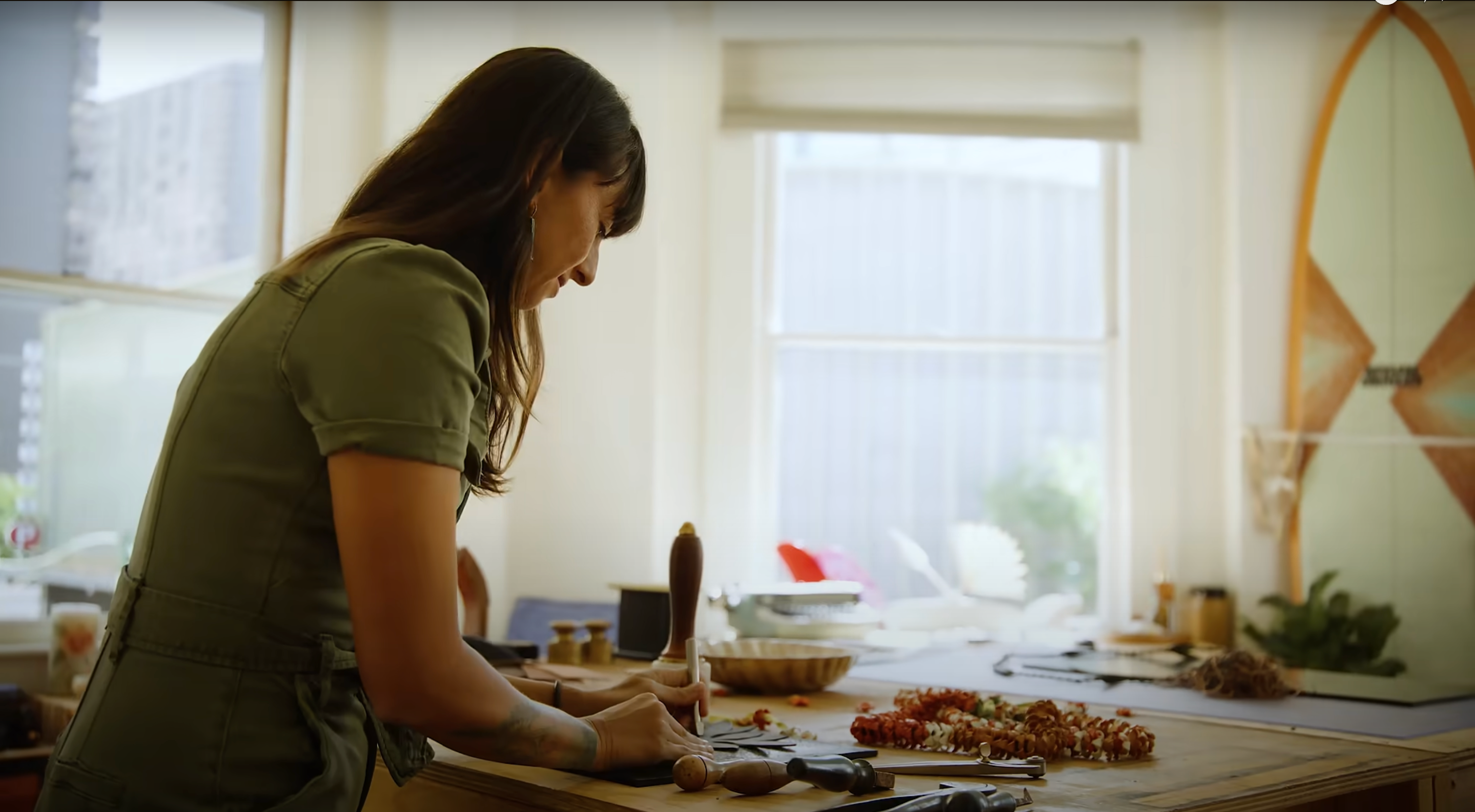 The longest-running paddling event in Hawai‘i, the Moloka‘i Hoe attracts more than a thousand participants annually. The inaugural event kicked off in 1952 when three Koa outrigger canoes and their teams launched in the surf at Kawakiu Bay on Moloka‘i’s west side and headed for Oahu, traversing more than 38 miles of open ocean through the treacherous Ka‘iwi Channel. The winners took just under 9 hours to reach the beach at Waikiki.
The race not only elevated outrigger racing's popularity in competitive water sports, but put the island on the map as a water sports destination. The Moloka‘i 2 Oahu Paddleboard World Championship also originates on the island. It's the culmination of a month-long celebration that draws paddleboarders and their fans from around the world.
Like many of the paddling excursions quietly enjoyed by adventurers, both of these prestigious paddling competitions, the Moloka‘i Hoe and the Moloka‘i 2 Oahu, begin at the Kaunakakai wharf at the Kamalo Harbor where pretty much everyone and everything arrives in Moloka‘i.
Most of the year, the place is perfectly chill. Inherent limitations keep the regular tourist trade from overwhelming Moloka‘i. A mere eight thousand people call the island home; most of them live in Kaunakakai. Although it’s without a doubt remote—there are no fleet of yachts choking the harbor or skyscraping hotels cluttering the shoreline or horizon, and no stoplights at the few intersections to manage traffic flow since there is no traffic—Moloka‘i is far from inaccessible. You can get there by one of two ferries or via local air carriers. Sure, once you arrive, your transportation options are limited to foot, bike or 4-wheel drive rentals, but at just 38 miles long and a mere 10 miles across at its widest point, Hawaii’s fifth-largest island is ideal for exploring both land and sea.
Kayaking or standup paddling the island’s coast, however, is one of the must-dos of any trip to Moloka‘i. Along the northeast coast, you can paddle beneath the world’s highest sea cliffs—soaring 3,600 to 3,900 feet from sea level to the crest. Keep in mind that the area’s remoteness requires greater advance planning and vigilance. You need to apply for permission, arrange drops and pick-ups, and drill down on safety, so make sure to do your homework before setting out on this trip.
One of the best places to kayak or standup paddle is along Hawaii’s longest continuous fringing reef (one of the three main types of coral reefs, distinguished from barrier reefs and atolls by a shallow lagoon that reaches to the shoreline or the entire lack of a lagoon), stretching 28 miles across the southern coast of Moloka‘i’. On the west end of the island, near Maunaloa, stretches Papohaku—one of the largest white sand beaches in all of the Islands.
No reason to spend money to haul along your inflatable. Experienced DIYers can rent ocean kayaks or stand up boards, and arrange for guided adventures (available for all skill levels) through Moloka'i Outdoors or Moloka‘i’ Fish and Dive.
Moloka’i’s secluded and rugged north shore is stunning, but also best explored by only the most experienced and intrepid paddlers willing to cover it in three to five days. Complicated bays and boulder-strewn beaches dominate the coast so you’ll need to plan carefully, including securing permission and arranging for put-in and take-out transport.
July and August are typically the calmest months to paddle the area, but keep in mind that "normal" seas include 4 to 6 foot waves often accompanied by 15- to 25-knot trade winds.
One of the most outstanding highlights here is just around the corner from the Papalaua Valley: 1,644 foot Papalaua Falls, originating from Kawai Nui Stream and thundering down five tiered drops. Further along, the verdant, fluted cliffs and many waterfalls of the Wailau Valley will have you enthusiastically grabbing for your camera.
The next natural place to stop or camp might appear to be Kalaupapa and Mo'omomi. Unfortunately, those two places are off-limits. And you’ll also need permission to pull in at the next natural landing area: the beach at the Pelekunu Valley preserve, which is "owned" and managed by the Nature Conservancy. There’s a good reason for this: The 5,759-acre preserve is home to nearly every native Hawaiian fish, crustacean and mollusk species; about three dozen rare plants; a half dozen endemic forest birds, and two endemic land snail species. The preserve is also there to protect the Pelekunu Valley Stream system and make sure it remains free flowing.
One of the best ways to enjoy Moloka’i’s spectacular fringing reef is from either kayak or the deck of a stand up paddleboard. Do this coast in day tours over several days and stop off to do some swimming and careful snorkeling while you’re there. You’re sure to see turtles and if you’re lucky: spot whales. In the morning, before the trade winds increase in velocity, it’s an easy, relaxing paddle.
One of the more popular trips to consider is a paddle that takes you west along the coast to Pala‘au Fishpond, the largest of several ancient fishponds—enclosures built of stacked stone—along the coast here. You’ll glide past an otherwise impenetrable forest of mangroves, unless you take a tour with the with guides from Molokai Fish and Dive, whose deep knowledge of this area will coax you through a narrow channel carved by fresh water flowing out of Pala‘au Fishpond.
Tide permitting, you can enjoy an even more exciting adventure outside the reef, but the open sea does require more experience and finesse.
~Jo Ostgarden
The longest-running paddling event in Hawai‘i, the Moloka‘i Hoe attracts more than a thousand participants annually. The inaugural event kicked off in 1952 when three Koa outrigger canoes and their teams launched in the surf at Kawakiu Bay on Moloka‘i’s west side and headed for Oahu, traversing more than 38 miles of open ocean through the treacherous Ka‘iwi Channel. The winners took just under 9 hours to reach the beach at Waikiki.
The race not only elevated outrigger racing's popularity in competitive water sports, but put the island on the map as a water sports destination. The Moloka‘i 2 Oahu Paddleboard World Championship also originates on the island. It's the culmination of a month-long celebration that draws paddleboarders and their fans from around the world.
Like many of the paddling excursions quietly enjoyed by adventurers, both of these prestigious paddling competitions, the Moloka‘i Hoe and the Moloka‘i 2 Oahu, begin at the Kaunakakai wharf at the Kamalo Harbor where pretty much everyone and everything arrives in Moloka‘i.
Most of the year, the place is perfectly chill. Inherent limitations keep the regular tourist trade from overwhelming Moloka‘i. A mere eight thousand people call the island home; most of them live in Kaunakakai. Although it’s without a doubt remote—there are no fleet of yachts choking the harbor or skyscraping hotels cluttering the shoreline or horizon, and no stoplights at the few intersections to manage traffic flow since there is no traffic—Moloka‘i is far from inaccessible. You can get there by one of two ferries or via local air carriers. Sure, once you arrive, your transportation options are limited to foot, bike or 4-wheel drive rentals, but at just 38 miles long and a mere 10 miles across at its widest point, Hawaii’s fifth-largest island is ideal for exploring both land and sea.
Kayaking or standup paddling the island’s coast, however, is one of the must-dos of any trip to Moloka‘i. Along the northeast coast, you can paddle beneath the world’s highest sea cliffs—soaring 3,600 to 3,900 feet from sea level to the crest. Keep in mind that the area’s remoteness requires greater advance planning and vigilance. You need to apply for permission, arrange drops and pick-ups, and drill down on safety, so make sure to do your homework before setting out on this trip.
One of the best places to kayak or standup paddle is along Hawaii’s longest continuous fringing reef (one of the three main types of coral reefs, distinguished from barrier reefs and atolls by a shallow lagoon that reaches to the shoreline or the entire lack of a lagoon), stretching 28 miles across the southern coast of Moloka‘i’. On the west end of the island, near Maunaloa, stretches Papohaku—one of the largest white sand beaches in all of the Islands.
No reason to spend money to haul along your inflatable. Experienced DIYers can rent ocean kayaks or stand up boards, and arrange for guided adventures (available for all skill levels) through Moloka'i Outdoors or Moloka‘i’ Fish and Dive.
Moloka’i’s secluded and rugged north shore is stunning, but also best explored by only the most experienced and intrepid paddlers willing to cover it in three to five days. Complicated bays and boulder-strewn beaches dominate the coast so you’ll need to plan carefully, including securing permission and arranging for put-in and take-out transport.
July and August are typically the calmest months to paddle the area, but keep in mind that "normal" seas include 4 to 6 foot waves often accompanied by 15- to 25-knot trade winds.
One of the most outstanding highlights here is just around the corner from the Papalaua Valley: 1,644 foot Papalaua Falls, originating from Kawai Nui Stream and thundering down five tiered drops. Further along, the verdant, fluted cliffs and many waterfalls of the Wailau Valley will have you enthusiastically grabbing for your camera.
The next natural place to stop or camp might appear to be Kalaupapa and Mo'omomi. Unfortunately, those two places are off-limits. And you’ll also need permission to pull in at the next natural landing area: the beach at the Pelekunu Valley preserve, which is "owned" and managed by the Nature Conservancy. There’s a good reason for this: The 5,759-acre preserve is home to nearly every native Hawaiian fish, crustacean and mollusk species; about three dozen rare plants; a half dozen endemic forest birds, and two endemic land snail species. The preserve is also there to protect the Pelekunu Valley Stream system and make sure it remains free flowing.
One of the best ways to enjoy Moloka’i’s spectacular fringing reef is from either kayak or the deck of a stand up paddleboard. Do this coast in day tours over several days and stop off to do some swimming and careful snorkeling while you’re there. You’re sure to see turtles and if you’re lucky: spot whales. In the morning, before the trade winds increase in velocity, it’s an easy, relaxing paddle.
One of the more popular trips to consider is a paddle that takes you west along the coast to Pala‘au Fishpond, the largest of several ancient fishponds—enclosures built of stacked stone—along the coast here. You’ll glide past an otherwise impenetrable forest of mangroves, unless you take a tour with the with guides from Molokai Fish and Dive, whose deep knowledge of this area will coax you through a narrow channel carved by fresh water flowing out of Pala‘au Fishpond.
Tide permitting, you can enjoy an even more exciting adventure outside the reef, but the open sea does require more experience and finesse.
~Jo Ostgarden
Off the Beaten Path Hawaii: Paddling Moloka’i
 The longest-running paddling event in Hawai‘i, the Moloka‘i Hoe attracts more than a thousand participants annually. The inaugural event kicked off in 1952 when three Koa outrigger canoes and their teams launched in the surf at Kawakiu Bay on Moloka‘i’s west side and headed for Oahu, traversing more than 38 miles of open ocean through the treacherous Ka‘iwi Channel. The winners took just under 9 hours to reach the beach at Waikiki.
The race not only elevated outrigger racing's popularity in competitive water sports, but put the island on the map as a water sports destination. The Moloka‘i 2 Oahu Paddleboard World Championship also originates on the island. It's the culmination of a month-long celebration that draws paddleboarders and their fans from around the world.
Like many of the paddling excursions quietly enjoyed by adventurers, both of these prestigious paddling competitions, the Moloka‘i Hoe and the Moloka‘i 2 Oahu, begin at the Kaunakakai wharf at the Kamalo Harbor where pretty much everyone and everything arrives in Moloka‘i.
Most of the year, the place is perfectly chill. Inherent limitations keep the regular tourist trade from overwhelming Moloka‘i. A mere eight thousand people call the island home; most of them live in Kaunakakai. Although it’s without a doubt remote—there are no fleet of yachts choking the harbor or skyscraping hotels cluttering the shoreline or horizon, and no stoplights at the few intersections to manage traffic flow since there is no traffic—Moloka‘i is far from inaccessible. You can get there by one of two ferries or via local air carriers. Sure, once you arrive, your transportation options are limited to foot, bike or 4-wheel drive rentals, but at just 38 miles long and a mere 10 miles across at its widest point, Hawaii’s fifth-largest island is ideal for exploring both land and sea.
Kayaking or standup paddling the island’s coast, however, is one of the must-dos of any trip to Moloka‘i. Along the northeast coast, you can paddle beneath the world’s highest sea cliffs—soaring 3,600 to 3,900 feet from sea level to the crest. Keep in mind that the area’s remoteness requires greater advance planning and vigilance. You need to apply for permission, arrange drops and pick-ups, and drill down on safety, so make sure to do your homework before setting out on this trip.
One of the best places to kayak or standup paddle is along Hawaii’s longest continuous fringing reef (one of the three main types of coral reefs, distinguished from barrier reefs and atolls by a shallow lagoon that reaches to the shoreline or the entire lack of a lagoon), stretching 28 miles across the southern coast of Moloka‘i’. On the west end of the island, near Maunaloa, stretches Papohaku—one of the largest white sand beaches in all of the Islands.
No reason to spend money to haul along your inflatable. Experienced DIYers can rent ocean kayaks or stand up boards, and arrange for guided adventures (available for all skill levels) through Moloka'i Outdoors or Moloka‘i’ Fish and Dive.
Moloka’i’s secluded and rugged north shore is stunning, but also best explored by only the most experienced and intrepid paddlers willing to cover it in three to five days. Complicated bays and boulder-strewn beaches dominate the coast so you’ll need to plan carefully, including securing permission and arranging for put-in and take-out transport.
July and August are typically the calmest months to paddle the area, but keep in mind that "normal" seas include 4 to 6 foot waves often accompanied by 15- to 25-knot trade winds.
One of the most outstanding highlights here is just around the corner from the Papalaua Valley: 1,644 foot Papalaua Falls, originating from Kawai Nui Stream and thundering down five tiered drops. Further along, the verdant, fluted cliffs and many waterfalls of the Wailau Valley will have you enthusiastically grabbing for your camera.
The next natural place to stop or camp might appear to be Kalaupapa and Mo'omomi. Unfortunately, those two places are off-limits. And you’ll also need permission to pull in at the next natural landing area: the beach at the Pelekunu Valley preserve, which is "owned" and managed by the Nature Conservancy. There’s a good reason for this: The 5,759-acre preserve is home to nearly every native Hawaiian fish, crustacean and mollusk species; about three dozen rare plants; a half dozen endemic forest birds, and two endemic land snail species. The preserve is also there to protect the Pelekunu Valley Stream system and make sure it remains free flowing.
One of the best ways to enjoy Moloka’i’s spectacular fringing reef is from either kayak or the deck of a stand up paddleboard. Do this coast in day tours over several days and stop off to do some swimming and careful snorkeling while you’re there. You’re sure to see turtles and if you’re lucky: spot whales. In the morning, before the trade winds increase in velocity, it’s an easy, relaxing paddle.
One of the more popular trips to consider is a paddle that takes you west along the coast to Pala‘au Fishpond, the largest of several ancient fishponds—enclosures built of stacked stone—along the coast here. You’ll glide past an otherwise impenetrable forest of mangroves, unless you take a tour with the with guides from Molokai Fish and Dive, whose deep knowledge of this area will coax you through a narrow channel carved by fresh water flowing out of Pala‘au Fishpond.
Tide permitting, you can enjoy an even more exciting adventure outside the reef, but the open sea does require more experience and finesse.
~Jo Ostgarden
The longest-running paddling event in Hawai‘i, the Moloka‘i Hoe attracts more than a thousand participants annually. The inaugural event kicked off in 1952 when three Koa outrigger canoes and their teams launched in the surf at Kawakiu Bay on Moloka‘i’s west side and headed for Oahu, traversing more than 38 miles of open ocean through the treacherous Ka‘iwi Channel. The winners took just under 9 hours to reach the beach at Waikiki.
The race not only elevated outrigger racing's popularity in competitive water sports, but put the island on the map as a water sports destination. The Moloka‘i 2 Oahu Paddleboard World Championship also originates on the island. It's the culmination of a month-long celebration that draws paddleboarders and their fans from around the world.
Like many of the paddling excursions quietly enjoyed by adventurers, both of these prestigious paddling competitions, the Moloka‘i Hoe and the Moloka‘i 2 Oahu, begin at the Kaunakakai wharf at the Kamalo Harbor where pretty much everyone and everything arrives in Moloka‘i.
Most of the year, the place is perfectly chill. Inherent limitations keep the regular tourist trade from overwhelming Moloka‘i. A mere eight thousand people call the island home; most of them live in Kaunakakai. Although it’s without a doubt remote—there are no fleet of yachts choking the harbor or skyscraping hotels cluttering the shoreline or horizon, and no stoplights at the few intersections to manage traffic flow since there is no traffic—Moloka‘i is far from inaccessible. You can get there by one of two ferries or via local air carriers. Sure, once you arrive, your transportation options are limited to foot, bike or 4-wheel drive rentals, but at just 38 miles long and a mere 10 miles across at its widest point, Hawaii’s fifth-largest island is ideal for exploring both land and sea.
Kayaking or standup paddling the island’s coast, however, is one of the must-dos of any trip to Moloka‘i. Along the northeast coast, you can paddle beneath the world’s highest sea cliffs—soaring 3,600 to 3,900 feet from sea level to the crest. Keep in mind that the area’s remoteness requires greater advance planning and vigilance. You need to apply for permission, arrange drops and pick-ups, and drill down on safety, so make sure to do your homework before setting out on this trip.
One of the best places to kayak or standup paddle is along Hawaii’s longest continuous fringing reef (one of the three main types of coral reefs, distinguished from barrier reefs and atolls by a shallow lagoon that reaches to the shoreline or the entire lack of a lagoon), stretching 28 miles across the southern coast of Moloka‘i’. On the west end of the island, near Maunaloa, stretches Papohaku—one of the largest white sand beaches in all of the Islands.
No reason to spend money to haul along your inflatable. Experienced DIYers can rent ocean kayaks or stand up boards, and arrange for guided adventures (available for all skill levels) through Moloka'i Outdoors or Moloka‘i’ Fish and Dive.
Moloka’i’s secluded and rugged north shore is stunning, but also best explored by only the most experienced and intrepid paddlers willing to cover it in three to five days. Complicated bays and boulder-strewn beaches dominate the coast so you’ll need to plan carefully, including securing permission and arranging for put-in and take-out transport.
July and August are typically the calmest months to paddle the area, but keep in mind that "normal" seas include 4 to 6 foot waves often accompanied by 15- to 25-knot trade winds.
One of the most outstanding highlights here is just around the corner from the Papalaua Valley: 1,644 foot Papalaua Falls, originating from Kawai Nui Stream and thundering down five tiered drops. Further along, the verdant, fluted cliffs and many waterfalls of the Wailau Valley will have you enthusiastically grabbing for your camera.
The next natural place to stop or camp might appear to be Kalaupapa and Mo'omomi. Unfortunately, those two places are off-limits. And you’ll also need permission to pull in at the next natural landing area: the beach at the Pelekunu Valley preserve, which is "owned" and managed by the Nature Conservancy. There’s a good reason for this: The 5,759-acre preserve is home to nearly every native Hawaiian fish, crustacean and mollusk species; about three dozen rare plants; a half dozen endemic forest birds, and two endemic land snail species. The preserve is also there to protect the Pelekunu Valley Stream system and make sure it remains free flowing.
One of the best ways to enjoy Moloka’i’s spectacular fringing reef is from either kayak or the deck of a stand up paddleboard. Do this coast in day tours over several days and stop off to do some swimming and careful snorkeling while you’re there. You’re sure to see turtles and if you’re lucky: spot whales. In the morning, before the trade winds increase in velocity, it’s an easy, relaxing paddle.
One of the more popular trips to consider is a paddle that takes you west along the coast to Pala‘au Fishpond, the largest of several ancient fishponds—enclosures built of stacked stone—along the coast here. You’ll glide past an otherwise impenetrable forest of mangroves, unless you take a tour with the with guides from Molokai Fish and Dive, whose deep knowledge of this area will coax you through a narrow channel carved by fresh water flowing out of Pala‘au Fishpond.
Tide permitting, you can enjoy an even more exciting adventure outside the reef, but the open sea does require more experience and finesse.
~Jo Ostgarden
